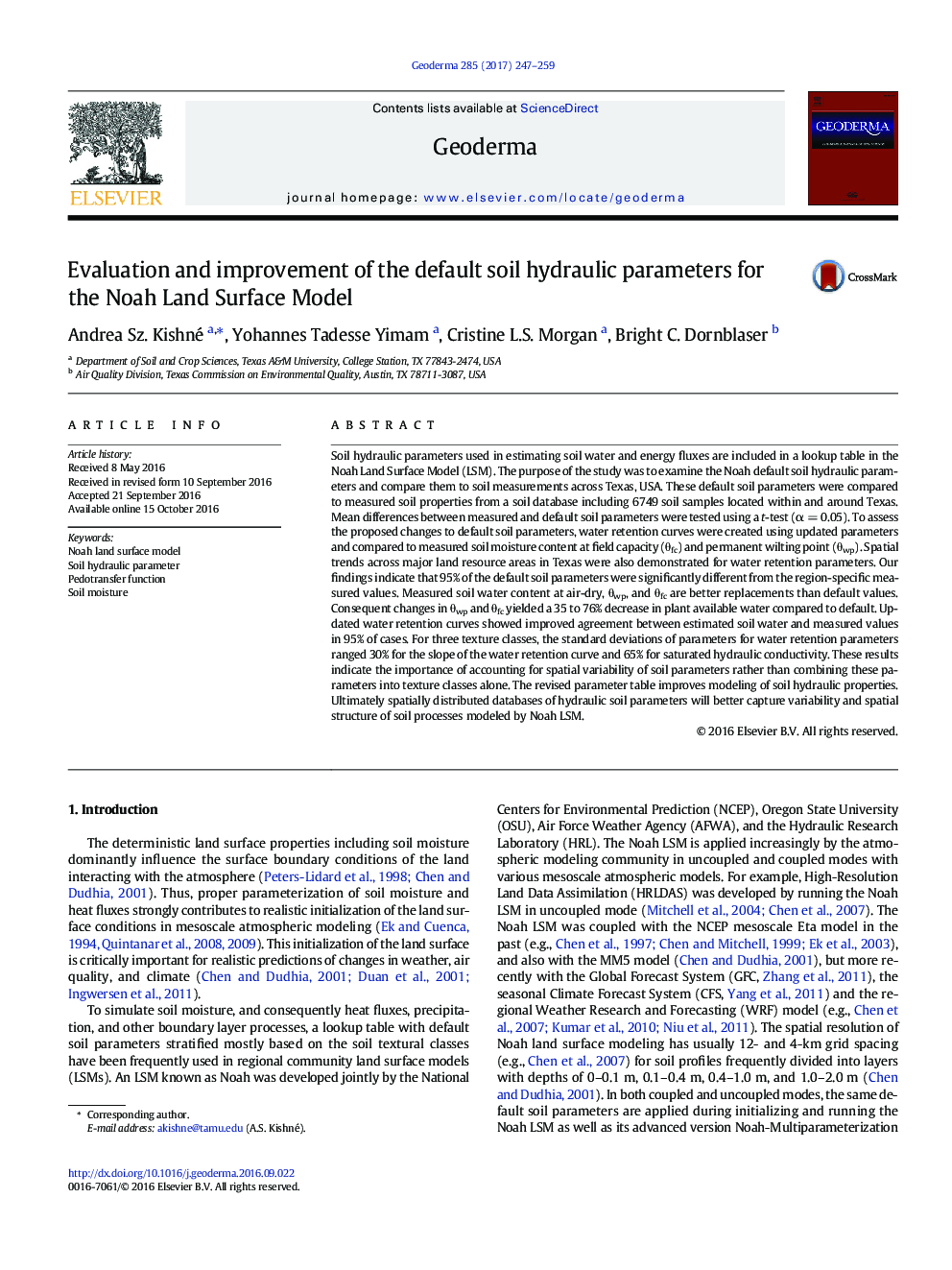| Article ID | Journal | Published Year | Pages | File Type |
|---|---|---|---|---|
| 6408226 | Geoderma | 2017 | 13 Pages |
â¢Most revised soil parameter values notably deviated from the default values.â¢Revised hydraulic parameter values yielded mostly improved retention modeling.â¢Regional spatial variability of selected default soil parameters was demonstrated.
Soil hydraulic parameters used in estimating soil water and energy fluxes are included in a lookup table in the Noah Land Surface Model (LSM). The purpose of the study was to examine the Noah default soil hydraulic parameters and compare them to soil measurements across Texas, USA. These default soil parameters were compared to measured soil properties from a soil database including 6749 soil samples located within and around Texas. Mean differences between measured and default soil parameters were tested using a t-test (α = 0.05). To assess the proposed changes to default soil parameters, water retention curves were created using updated parameters and compared to measured soil moisture content at field capacity (θfc) and permanent wilting point (θwp). Spatial trends across major land resource areas in Texas were also demonstrated for water retention parameters. Our findings indicate that 95% of the default soil parameters were significantly different from the region-specific measured values. Measured soil water content at air-dry, θwp, and θfc are better replacements than default values. Consequent changes in θwp and θfc yielded a 35 to 76% decrease in plant available water compared to default. Updated water retention curves showed improved agreement between estimated soil water and measured values in 95% of cases. For three texture classes, the standard deviations of parameters for water retention parameters ranged 30% for the slope of the water retention curve and 65% for saturated hydraulic conductivity. These results indicate the importance of accounting for spatial variability of soil parameters rather than combining these parameters into texture classes alone. The revised parameter table improves modeling of soil hydraulic properties. Ultimately spatially distributed databases of hydraulic soil parameters will better capture variability and spatial structure of soil processes modeled by Noah LSM.
